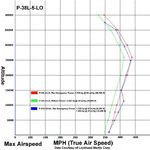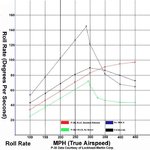drgondog
Major
This discussion reminds me a little of the discussion about how a wing creates lift. I had always thought it was Bernoulli's Principle until I read "Stick and Rudder" Was in an airliner one day and was sitting next to a pair of(I think) young aero engineers and I mentioned that lift was created by a wing pushing down on the air and the air pushing up. They looked at me like a heretic and started talking about Bernoulli and the air having to speed up over the airfoil and creating low pressure over the top. I then asked them how a wing created lift when the airplane is inverted. We had a lot of fun.
Roll on your back with slight forward pressure to give a freestream angle of attack on the 'original upper/now lower' airfoil.
Same principle as a curve ball. The original airfoil design approach is the Theodorsen Transformation in which the freestream flow velocity around a rotating cyclinder is mapped via complex variables to and airfoil shape.
The velocity on the rotating side which 'adds' rotational velocity vector to the freestream, is higher than the velocity over the opposite side in which the rotational velocity vector is subtracted from the freestream velocity.
Vtop = Vfs + Vr, Vbot =Vfs - Vr
The difference in Pressure is then 1/2 x rho x (Vtop>>2 - Vbot>>2) and multiply that by the cross sectional area of the ball gives you the force vector perpendicular to the freestream.. in the direction of 'lowest' pressure.
Strike! unless not enough rotational velocity is imparted by the curve-baller - in which case Home Run on the 'hanging (and slow) curve ball'
The kids were basically right.


